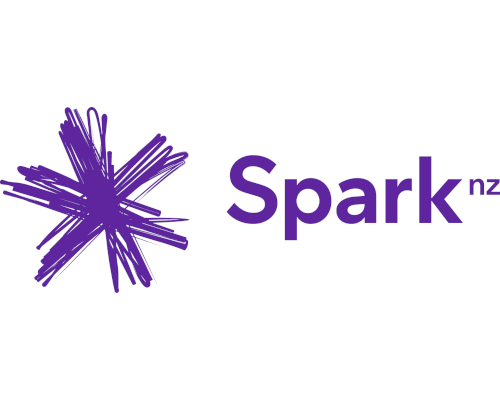Spark switches on new ‘Internet of Things’ network in a move to connect smart cities
Spark has switched on its second Internet of Things (IoT) network, LTE Cat-M1 (M1), which will run over Spark’s 4G mobile network to provide quality, low bandwidth IoT connectivity and will deliver a new capability for New Zealand in IoT.
The new network will be a key enabler to the progressive rollout of smart metering by Landis+Gyr, a global leader in smart metering and smart grid solutions.
Spark is the first operator in New Zealand to make its M1 network commercially available in main centres with a progressive nationwide rollout happening in the coming months.
The rollout of Spark’s M1 IoT Mobile network will connect a wide variety of new and existing IoT solutions and services including wearables, smart appliances, electricity, gas and water meters, asset monitoring, industrial automation and more. Running on Spark’s cellular network, M1 technology enables lower cost devices, greater breadth and depth of coverage, and near real-time access.
Spark’s Digital Services Lead, Michael Stribling says the rollout is a significant milestone.
“We’re excited to work with Landis+Gyr to roll out their smart metering technology on our network. We’re very focused on delivering the network foundations to allow businesses to use IoT to run their businesses better.
“By accelerating the availability of networks, we’re making IoT real, and we’re seeing huge opportunity for New Zealand businesses and communities to leverage this new technology.”
Landis+Gyr was the first in Australia to develop and demonstrate smart metering over the M1 network, which is being used in their smart meter and communication modules. The company already had smart metering solutions in New Zealand and opted to switch to Spark’s M1 network to take advantage of its broader coverage.
Landis+Gyr’s General Manager of Australia and New Zealand, Rodney Chaplin says rolling out smart metering over the new network will provide a robust solution for customers.
“Landis+Gyr meters fitted with our flexible and modular communication modules are perfectly suited to take advantage of 4G networks with M1 technology.
“This allows us to get to market quickly and provide utilities with a robust coverage to ensure the success of smart metering rollout.”
Helping New Zealand cities run smarter
Switching on the M1 network will enable other IoT technologies like smart cities and connected cars from overseas to be adopted here in New Zealand, says Stribling.
“M1 is a secure, high-quality network, ideal where sensors and devices are transferring data regularly and near real-time access to that data is critical.
“We’re working with customers on a broad range of use cases for M1, driven by its nationwide coverage and high performance. Great examples include vehicle telematics, smart metering, smart health devices and smart cities applications such as lighting and environmental monitoring.”
Councils and asset managers will be able to connect key infrastructure like environmental and air quality monitoring, transport and parking solutions, digital sinage and street lights to the network to monitor their condition and enable better planning and decision making.
“We’re excited about the possibilities of IoT and what it’ll enable New Zealanders to do, and we now have a market-ready service that’ll help bring those possibilities to life,” says Stribling.
Spark’s Network Evolution Lead, Colin Brown agrees that the M1 network will be of benefit for all New Zealanders.
“M1 offers huge potential for businesses, government and cities to work smarter, make better decisions and deliver better outcomes. We’ve invested in this purpose-built network so that our customers can take advantage of these possibilities. We’re confident New Zealand will be well-set for future growth in this technology.”
Notes to the editor
Spark has
switched on the Connected IoT Mobile network in major
centres. The network will be rolled out across the rest of
the country over the next six months.
LTE Cat-M1 will run
on Spark’s core 4G network, covering 95% of the places New
Zealanders live, work and play.
Alongside LTE Cat-M1,
Spark also operates a low-power, long-range IoT network
powered by LoRaWANTM technology, which now provides coverage
to over 120 sites across the country across all major urban
centres. This network is ideally suited for low data rate
applications.
Spark is delivering two IoT networks (LTE
Cat-M1 and LoRaWAN™) to cater to different use-cases. LTE
Cat-M1 is well suited to IoT applications requiring low to
medium data usage and long battery lifetimes. LoRaWAN™ is
a low-power, long-range network ideally suited for simple
data transmission and long battery lifetimes.
LTE Cat-M1
utilises Spark’s licensed spectrum (700 and 1800MHz
bands), while LoRaWAN™ utilises shared, unlicensed
spectrum. Cat-M1 operates on Spark’s existing mobile
infrastructure (towers), while LoRaWAN™ operates on
separate gateways deployed on Spark cell towers and
third-party sites that Spark is deploying across New
Zealand.
ends



 Bill Bennett: Download Weekly - How would NZ telecoms cope with another cyclone
Bill Bennett: Download Weekly - How would NZ telecoms cope with another cyclone NZ On Air: Firm Audience Favourites Lead NZ On Air Non-Fiction Funding
NZ On Air: Firm Audience Favourites Lead NZ On Air Non-Fiction Funding Insurance and Financial Services Ombudsman: Woman Gets $40k More After Disputing Insurer’s Decision
Insurance and Financial Services Ombudsman: Woman Gets $40k More After Disputing Insurer’s Decision BNZ: A Quarter Of Older NZers Fear Going Online Due To Scam Concerns
BNZ: A Quarter Of Older NZers Fear Going Online Due To Scam Concerns University of Auckland: Scientists Develop Tool To Monitor Coastal Erosion In Fine Detail
University of Auckland: Scientists Develop Tool To Monitor Coastal Erosion In Fine Detail Oji Fibre Solutions: OjiFS Proposes To Discontinue Paper Production At Kinleith Mill
Oji Fibre Solutions: OjiFS Proposes To Discontinue Paper Production At Kinleith Mill



